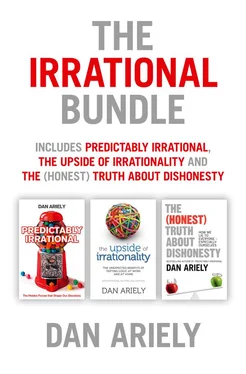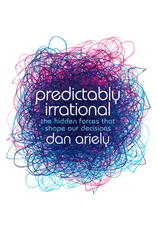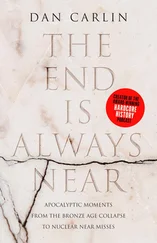Dan Ariely - The Irrational Bundle
Здесь есть возможность читать онлайн «Dan Ariely - The Irrational Bundle» — ознакомительный отрывок электронной книги совершенно бесплатно, а после прочтения отрывка купить полную версию. В некоторых случаях можно слушать аудио, скачать через торрент в формате fb2 и присутствует краткое содержание. Жанр: unrecognised, на английском языке. Описание произведения, (предисловие) а так же отзывы посетителей доступны на портале библиотеки ЛибКат.
- Название:The Irrational Bundle
- Автор:
- Жанр:
- Год:неизвестен
- ISBN:нет данных
- Рейтинг книги:3 / 5. Голосов: 1
-
Избранное:Добавить в избранное
- Отзывы:
-
Ваша оценка:
- 60
- 1
- 2
- 3
- 4
- 5
The Irrational Bundle: краткое содержание, описание и аннотация
Предлагаем к чтению аннотацию, описание, краткое содержание или предисловие (зависит от того, что написал сам автор книги «The Irrational Bundle»). Если вы не нашли необходимую информацию о книге — напишите в комментариях, мы постараемся отыскать её.
The Irrational Bundle — читать онлайн ознакомительный отрывок
Ниже представлен текст книги, разбитый по страницам. Система сохранения места последней прочитанной страницы, позволяет с удобством читать онлайн бесплатно книгу «The Irrational Bundle», без необходимости каждый раз заново искать на чём Вы остановились. Поставьте закладку, и сможете в любой момент перейти на страницу, на которой закончили чтение.
Интервал:
Закладка:
“For those of you who don’t know much about wines,” Drazen continued, “this bottle received eighty-six points from Wine Spectator. It has the flavor of red berry, mocha, and black chocolate; it’s a medium-bodied, medium-intensity, nicely balanced red, and it makes for delightful drinking.”
Drazen held up another bottle. This was a Hermitage Jaboulet La Chapelle, 1996, with a 92-point rating from the Wine Advocate magazine. “The finest La Chapelle since 1990,” Drazen intoned, while the students looked up curiously. “Only 8,100 cases made . . .”
In turn, Drazen held up four other items: a cordless trackball (TrackMan Marble FX by Logitech); a cordless keyboard and mouse (iTouch by Logitech); a design book (The Perfect Package: How to Add Value through Graphic Design); and a one-pound box of Belgian chocolates by Neuhaus.
Drazen passed out forms that listed all the items. “Now I want you to write the last two digits of your social security number at the top of the page,” he instructed. “And then write them again next to each of the items in the form of a price. In other words, if the last two digits are twenty-three, write twenty-three dollars.”
“Now when you’re finished with that,” he added, “I want you to indicate on your sheets—with a simple yes or no—whether you would pay that amount for each of the products.”
When the students had finished answering yes or no to each item, Drazen asked them to write down the maximum amount they were willing to pay for each of the products (their bids). Once they had written down their bids, the students passed the sheets up to me and I entered their responses into my laptop and announced the winners. One by one the student who had made the highest bid for each of the products would step up to the front of the class, pay for the product, * Конец ознакомительного фрагмента. Текст предоставлен ООО «ЛитРес». Прочитайте эту книгу целиком, купив полную легальную версию на ЛитРес. Безопасно оплатить книгу можно банковской картой Visa, MasterCard, Maestro, со счета мобильного телефона, с платежного терминала, в салоне МТС или Связной, через PayPal, WebMoney, Яндекс.Деньги, QIWI Кошелек, бонусными картами или другим удобным Вам способом.
and take it with them.
The students enjoyed this class exercise, but when I asked them if they felt that writing down the last two digits of their social security numbers had influenced their final bids, they quickly dismissed my suggestion. No way!
When I got back to my office, I analyzed the data. Did the digits from the social security numbers serve as anchors? Remarkably, they did: the students with the highest-ending social security digits (from 80 to 99) bid highest, while those with the lowest-ending numbers (1 to 20) bid lowest. The top 20 percent, for instance, bid an average of $56 for the cordless keyboard; the bottom 20 percent bid an average of $16. In the end, we could see that students with social security numbers ending in the upper 20 percent placed bids that were 216 to 346 percent higher than those of the students with social security numbers ending in the lowest 20 percent (see table on the facing page).
Now if the last two digits of your social security number are a high number I know what you must be thinking: “I’ve been paying too much for everything my entire life!” This is not the case, however. Social security numbers were the anchor in this experiment only because we requested them. We could have just as well asked for the current temperature or the manufacturer’s suggested retail price (MSRP). Any question, in fact, would have created the anchor. Does that seem rational? Of course not. But that’s the way we are—goslings, after all. * Конец ознакомительного фрагмента. Текст предоставлен ООО «ЛитРес». Прочитайте эту книгу целиком, купив полную легальную версию на ЛитРес. Безопасно оплатить книгу можно банковской картой Visa, MasterCard, Maestro, со счета мобильного телефона, с платежного терминала, в салоне МТС или Связной, через PayPal, WebMoney, Яндекс.Деньги, QIWI Кошелек, бонусными картами или другим удобным Вам способом.
The data had one more interesting aspect. Although the willingness to pay for these items was arbitrary, there was also a logical, coherent aspect to it. When we looked at the bids for the two pairs of related items (the two wines and the two computer components), their relative prices seemed incredibly logical. Everyone was willing to pay more for the keyboard than for the trackball—and also pay more for the 1996 Hermitage than for the 1998 Côtes du Rhône. The significance of this is that once the participants were willing to pay a certain price for one product, their willingness to pay for other items in the same product category was judged relative to that first price (the anchor).
This, then, is what we call arbitrary coherence. Initial prices are largely “arbitrary” and can be influenced by responses to random questions; but once those prices are established in our minds, they shape not only what we are willing to pay for an item, but also how much we are willing to pay for related products (this makes them coherent).
Now I need to add one important clarification to the story I’ve just told. In life we are bombarded by prices. We see the manufacturer’s suggested retail price (MSRP) for cars, lawn mowers, and coffeemakers. We get the real estate agent’s spiel on local housing prices. But price tags by themselves are not necessarily anchors. They become anchors when we contemplate buying a product or service at that particular price. That’s when the imprint is set. From then on, we are willing to accept a range of prices—but as with the pull of a bungee cord, we always refer back to the original anchor. Thus the first anchor influences not only the immediate buying decision but many others that follow.
We might see a 57-inch LCD high-definition television on sale for $3,000, for instance. The price tag is not the anchor. But if we decide to buy it (or seriously contemplate buying it) at that price, then the decision becomes our anchor henceforth in terms of LCD television sets. That’s our peg in the ground, and from then on—whether we shop for another set or merely have a conversation at a backyard cookout—all other high-definition televisions are judged relative to that price.
Anchoring influences all kinds of purchases. Uri Simonsohn (a professor at the University of Pennsylvania) and George Loewenstein, for example, found that people who move to a new city generally remain anchored to the prices they paid for housing in their former city. In their study they found that people who move from inexpensive markets (say, Lubbock, Texas) to moderately priced cities (say, Pittsburgh) don’t increase their spending to fit the new market. * Конец ознакомительного фрагмента. Текст предоставлен ООО «ЛитРес». Прочитайте эту книгу целиком, купив полную легальную версию на ЛитРес. Безопасно оплатить книгу можно банковской картой Visa, MasterCard, Maestro, со счета мобильного телефона, с платежного терминала, в салоне МТС или Связной, через PayPal, WebMoney, Яндекс.Деньги, QIWI Кошелек, бонусными картами или другим удобным Вам способом.
Rather, these people spend an amount similar to what they were used to in the previous market, even if this means having to squeeze themselves and their families into smaller or less comfortable homes. Likewise, transplants from more expensive cities sink the same dollars into their new housing situation as they did in the past. People who move from Los Angeles to Pittsburgh, in other words, don’t generally downsize their spending much once they hit Pennsylvania: they spend an amount similar to what they used to spend in Los Angeles.
Интервал:
Закладка:
Похожие книги на «The Irrational Bundle»
Представляем Вашему вниманию похожие книги на «The Irrational Bundle» списком для выбора. Мы отобрали схожую по названию и смыслу литературу в надежде предоставить читателям больше вариантов отыскать новые, интересные, ещё непрочитанные произведения.
Обсуждение, отзывы о книге «The Irrational Bundle» и просто собственные мнения читателей. Оставьте ваши комментарии, напишите, что Вы думаете о произведении, его смысле или главных героях. Укажите что конкретно понравилось, а что нет, и почему Вы так считаете.












